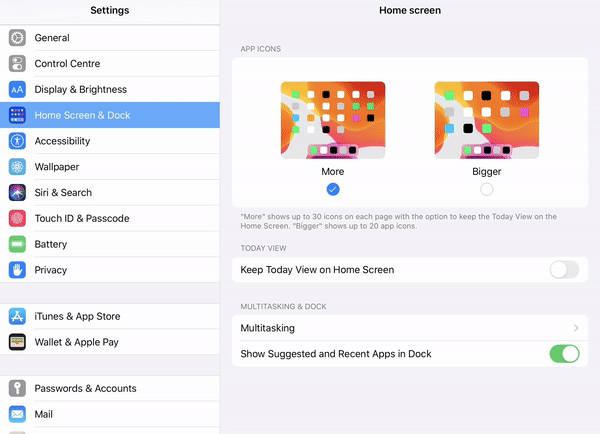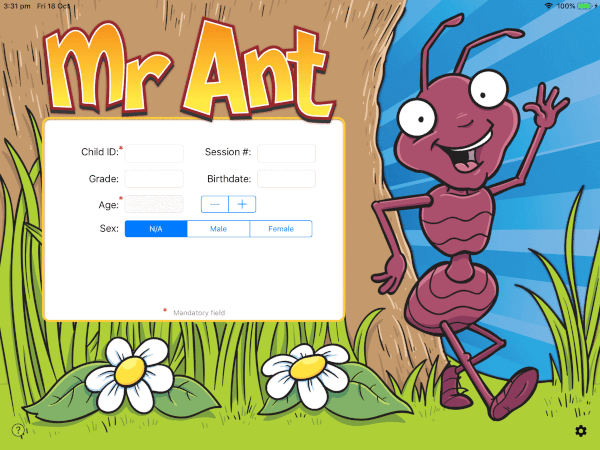Initial App Setup
Below we outline the recommended process for configuring the iPad and app(s). Consider this a Quick Start guide to setting up and commencing any of the Toolbox apps.
1. Turn off multi-touch gestures: Multi-touch gesturing can lead to unexpected performance of the app. This should be turned off in the iPad’s Settings app by selecting General -> Multitasking & Dock -> Toggle off 'Allow Multiple Apps' and ‘Gestures’.
2. Open the EYT app. To configure the app, open the Settings Menu by pressing the ‘gear icon’ located at the bottom right of the app’s home screen. There are a number of fields and functions that will likely be of interest, as described below. Note: These settings only need to be entered once and will remain configured until they are changed in the settings menu.
3. Populate the Study Name. This field allows you to allocate data to a particular purpose or study, which will come in handy if the app will be used for various purposes.
4. Set up your preferred data capture option:
Database URL: If you intend to collect data through an online database, this is where you specify the URL of that database. If using this data capture option, on completion of the game the iPad will immediately submit trial-by-trial results to the specified database (if connected to Wi-Fi) or queue the data on the iPad until the next time the iPad is connected to Wi- Fi and the app is launched. For more information about this data capture option, visit the Toolbox Data page on this website.
Email Results: If you intend to collect data though e-mail, you will need to toggle on Email Results (note that this will disable database data entry) and enter the desired destination e-mail address in the ‘Email address to send results to’ field. You also need to ensure the iPad’s Mail app is functional, because this is how the e-mail data will be sent. On completion of each game, the app will generate an e-mail with the data, which will queue in the Mail app’s outbox until the iPad is connected to Wi-Fi. For more information about this data capture option, visit the Toolbox Data page on this website.
5. Modify game settings. While all of the apps, by default, are set in the configuration in which they were validated, some apps allow you to modify these if desired. Mr Ant, for instance, allows you to present stickers concurrently (default), in forward order or in backward order. Go/No-Go allows you to alter stimulus numbers and durations. It should be considered, however, whether/how alteration of settings might influence the properties of the task and data generated. The default settings for all of the apps are those with which the apps were validated.
6. Select the desired language. The apps are being translated into an increasing number of languages, thanks to our international collaborators.
7. Turn on/off child performance charts. For those interested in situating the child’s performance within age expectations, based on our preliminary norms and subsequent data collections, toggling this functionality on will graphically situate a child’s result along a continuum of performance for their age. This requires the child’s age to be entered alongside the Child ID.



Starting the Task
8. To begin the game, enter a Child ID comprised of any combination of letters and/or numbers. For researchers, this is likely an anonymised alphanumeric code. For educational purposes, this might be a child’s name.
9. If Child Performance Charts have been turned on, the app also requires the child’s age. This can be entered as a date of birth (from which age is calculated), typing in an age (in years) or using the age stepper.
10. Once these fields are populated (and any other optional fields you require), tap ‘Start’ or ‘Skip Practice’. ‘Start’ will begin the full task, including instructions and practice. ‘Skip Practice’ will present only brief instructions (and no practice trials), which may be useful in cases of a repeat administration when the child is already familiar with the task expectations.
